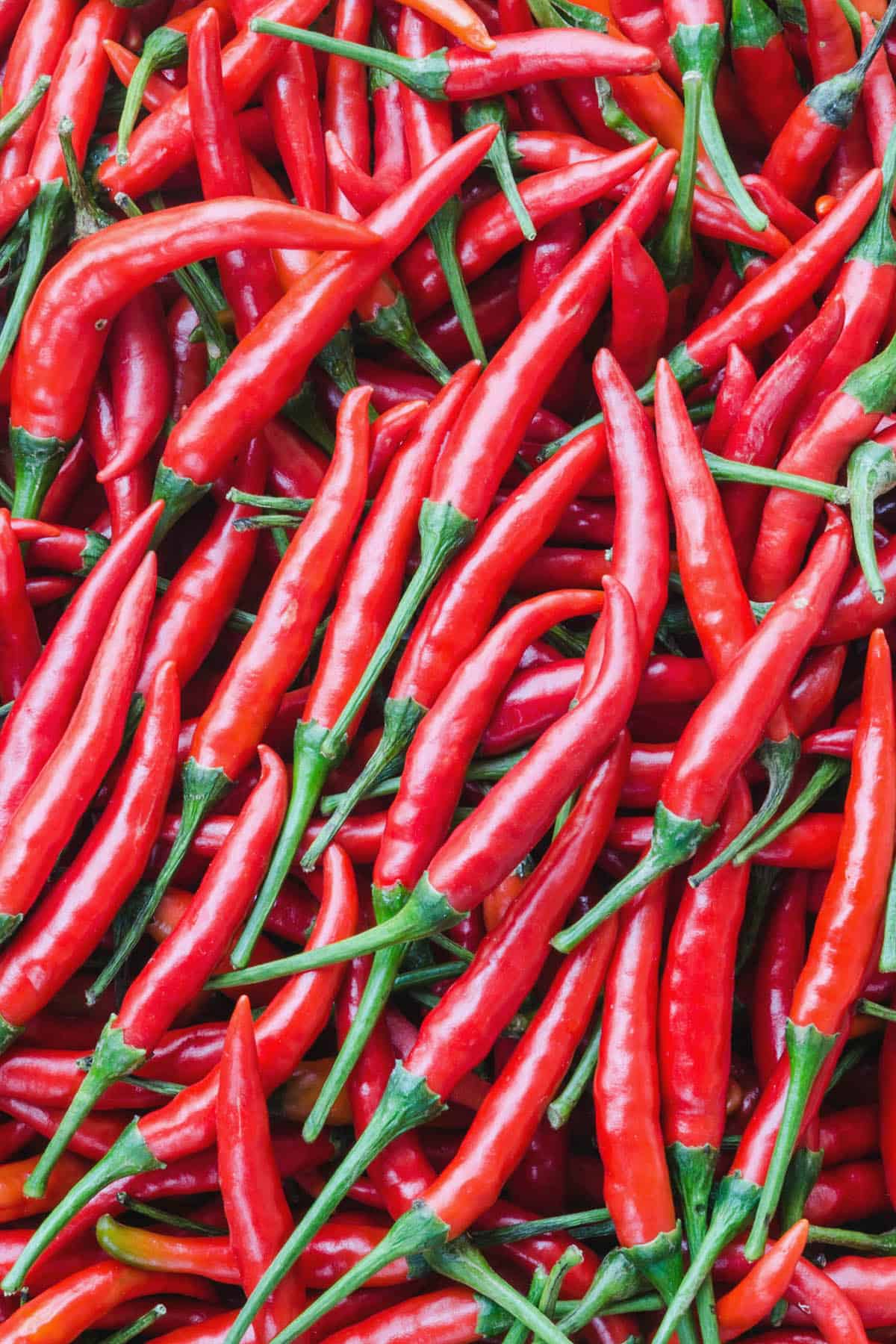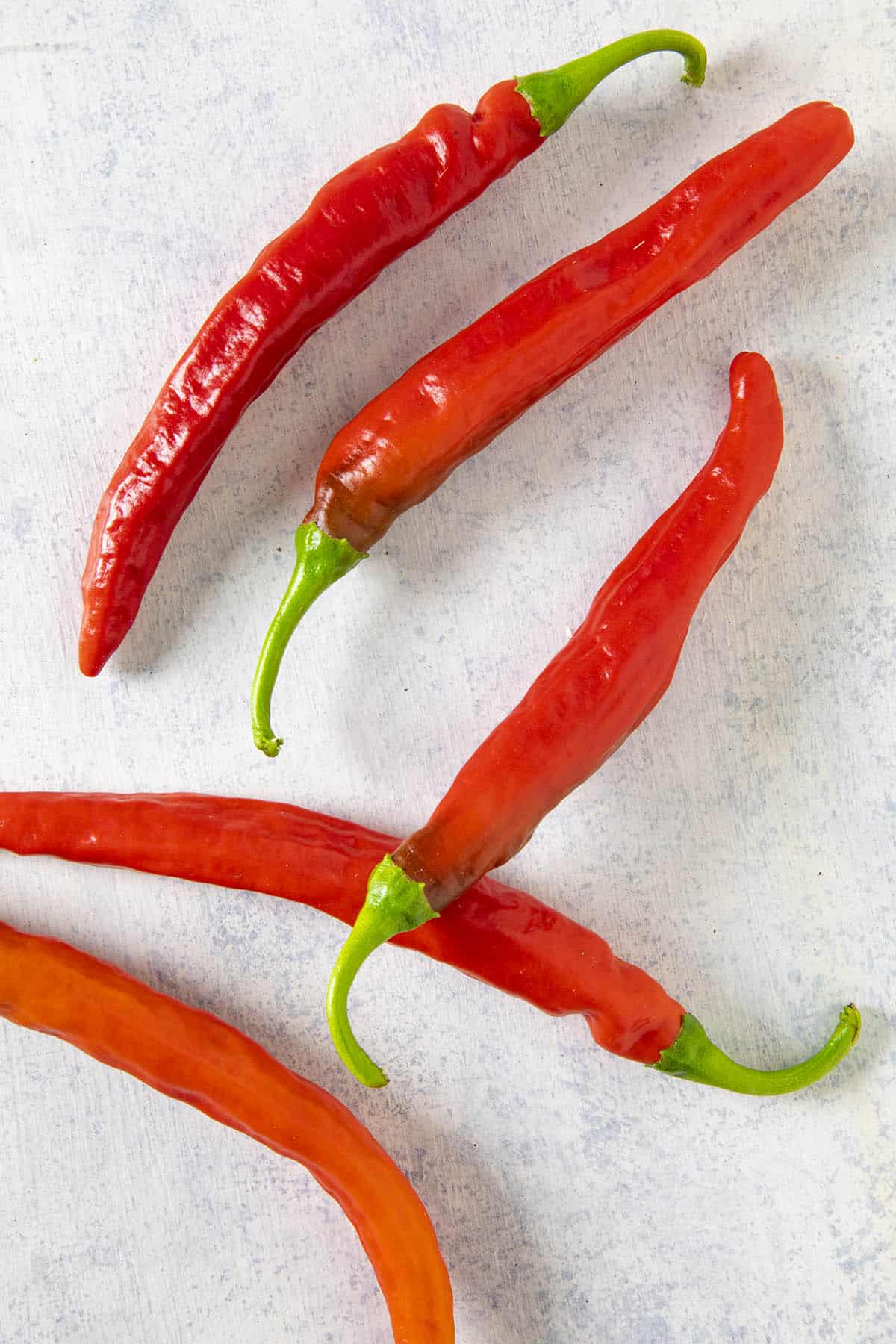Be careful not to overwater. See my section on Growing Chili Peppers, as well as this page - a Guide to Growing Chili Peppers. The cayenne pepper is a thin chili pepper, green to red in color, about 2 to 5 inches long. The “cayenne pepper” spice you use mostly in pizza restaurants is the dried, ground version of this pepper. It belongs to the nightshade family of flowering plants and are related to bell peppers and jalapenos. The word cayenne comes from the city of Cayenne in French Guiana. Cayenne is great in soups and sauces, on pizzas, as well as over meats and seafoods. Keep it on the table in a shaker as an alternative to salt or pepper. Cayenne peppers are usually used as a dried spice, which is made by drying and grinding the peppers or pulping and baking them into cakes, which are then ground to produce the spice. Cayenne peppers can also be used fresh in dishes, but are a little harder to find outside of the powdered form. In addition, the vast majority of popular hot sauces all rely on cayenne for part of their kick, particularly if the sauce also contains vinegar. Cayenne plants like some heat with a longer growing season and lots of sun, though they can react poorly to too much heat as much as too much cold. Plant your seeds when temps are a minimum of 60 degrees F (16 degrees C) in well-drained soil. Seedlings should be spaced 18-24 inches apart in a row. There are many different types of cayenne peppers, and I have grown many in my own garden. Here are some links to different types. NOTE: This page was updated on 4/5/2023 to include new photo and information. It was originally published on 9/27/2013. The color should be a vibrant red and the pods will be anywhere from 2 to 5 inches long. You can pick your cayenne peppers when they are green, though the flavor will be somewhat grassy and the heat not so intense. The pods usually ripen in 70 days.
Calories: 17 Fat: 1 gram Carbs: 3 grams Fiber: 1.4 grams Protein: 0.6 grams Vitamin A: 44% of the RDI Vitamin E: 8% of the RDI Vitamin C: 7% of the RDI Vitamin B6: 6% of the RDI Vitamin K: 5% of the RDI Manganese: 5% of the RDI Potassium: 3% of the RDI Riboflavin: 3% of the RDI
Of course you should always seek medical advice from your physician if using cayennes or other peppers for health reasons, such as pain relief, but they are quite healthy for you. The real benefits come from the active ingredient, Capsaicin. Learn more about the benefits of cayenne.
Homemade Cayenne Pepper Sauce Recipe Homemade Cayenne Pepper Powder Recipe.
See also: What is Paprika?

